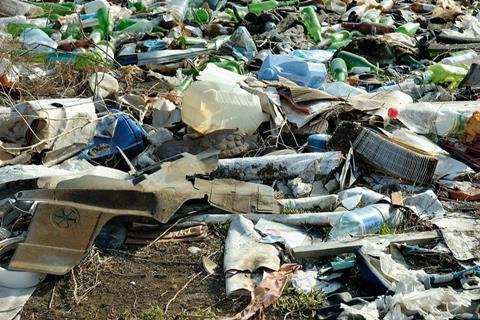The widespread presence of tiny plastics, known as microplastics and nanoplastics, in our environment is raising alarm. These particles, coming from various sources like industrial waste or larger plastic breakdown, are increasingly found in water, soil, and air.

They’re especially concerning for soil health as they may change bacterial behaviors and propagation of antibiotic resistance genes. Nanoplastics are particularly worrying due to their abundance and unique underlying mechanisms. Understanding how these plastics interact with soil bacteria is crucial for addressing this environmental and health issue.
In a study published online in Eco-Environment & Health, researchers from Zhejiang Shuren University and China Agricultural University have delved into these interactions, aiming to provide insights into the mechanisms and implications of plastic pollution on soil health and antibiotic resistance.
Bacterial community structure
In this study, scientists investigated the effects of tiny plastic particles, known as nanoplastics and microplastics, on the bacterial community structure and the spread of antibiotic resistance genes (ARGs) in soil. They focused on polystyrene, a common plastic pollutant.
The research revealed that both nanoplastics and microplastics alter soil microbes and increase antibiotic resistance. Notably, nanoplastics, due to their small size and large surface area, had a more significant impact, even in small quantities.
This led to changes in the dominant types of bacteria and enhanced the spread of ARGs, potentially weakening the effectiveness of antibiotics. The findings highlight the growing concern over the presence of tiny plastics in soil and their implications for health and environmental sustainability.
Startling truth
Lead researcher Jie Wang said: “Our findings reveal a startling truth about the hidden dangers of nanoplastics in our environment. They not only disrupt soil microbial communities but also facilitate the spread of antibiotic resistance, posing a silent yet significant threat to ecological and public health.”
Overall, the research highlights the complex ways that these tiny plastics are affecting soil and potentially our health. It shows that we need to understand more about these impacts and find ways to reduce plastic pollution to protect our environment and health.
This research underscores the urgent need for comprehensive strategies to manage plastic waste and mitigate its impact on soil ecosystems and public health. By highlighting the role of nanoplastics in amplifying ARG spread and altering microbial communities, the study provides crucial insights for environmental policies and practices aimed at preserving soil health and preventing the escalation of antibiotic resistance.







No comments yet